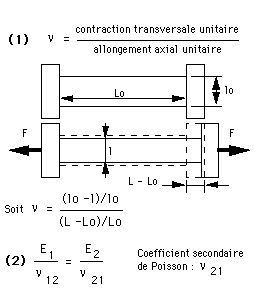-
 Igneous rock
Igneous rock
-
 Peptide bond
Peptide bond
-
 AVI
AVI
-
 Common juniper
Common juniper
-
 White cell
White cell
-
 Weed
Weed
-
 Podicipediformes
Podicipediformes
-
 Pneumocyte
Pneumocyte
-
 Joist
Joist
-
 Reactivation
Reactivation
-
 Blue Car
Blue Car
-
 Amphibolite
Amphibolite
-
 CGS system
CGS system
-
 Pod
Pod
-
 Tropical period
Tropical period
-
 RC4
RC4
-
 Stalactite
Stalactite
-
 Thermocline
Thermocline
-
 Constellation of Scorpio
Constellation of Scorpio
-
 Plateosaurus
Plateosaurus
-
 Ion exchanger
Ion exchanger
-
 Placer
Placer
-
 Fluorescein
Fluorescein
-
 Mating
Mating
-
 Tardigrade
Tardigrade
-
 Continental slope
Continental slope
-
 Terrestrial meridian of a location
Terrestrial meridian of a location
-
 Clay stone
Clay stone
-
 Biofilter
Biofilter
-
 Phanerozoic
Phanerozoic
Poisson ratio
The principal Poisson ratio describes the contraction of matter in a direction perpendicular to the applied load.
This ratio was developed analytically by Denis Poisson, a French mathematician (1781 - 1840), the author of works on mathematical physics and mechanics, who determined its value using the molecular theory of the constitution of matter. It is defined by formula 1 opposite.
The Poisson ratio is denoted by the Greek letter ν and is one of the elastic constants (2 for isotropic materials or 4 for transversely isotropic materials). It is theoretically equal to 0.25 for a perfectly isotropic material and in practice is very close to this value.
For an isotropic material, the Poisson ratio allows the shear modulus G to be directly related to the Young modulus E.
The Poisson ratio is then always equal to or lower than 1/2. If it is equal to 1/2, the material is perfectly incompressible.
In the case of a laminate (transversely isotropic), we define a secondary Poisson coefficient using relationship 2 opposite linking E1 and E2.

Poisson ratio
Latest
Fill out my online form.



